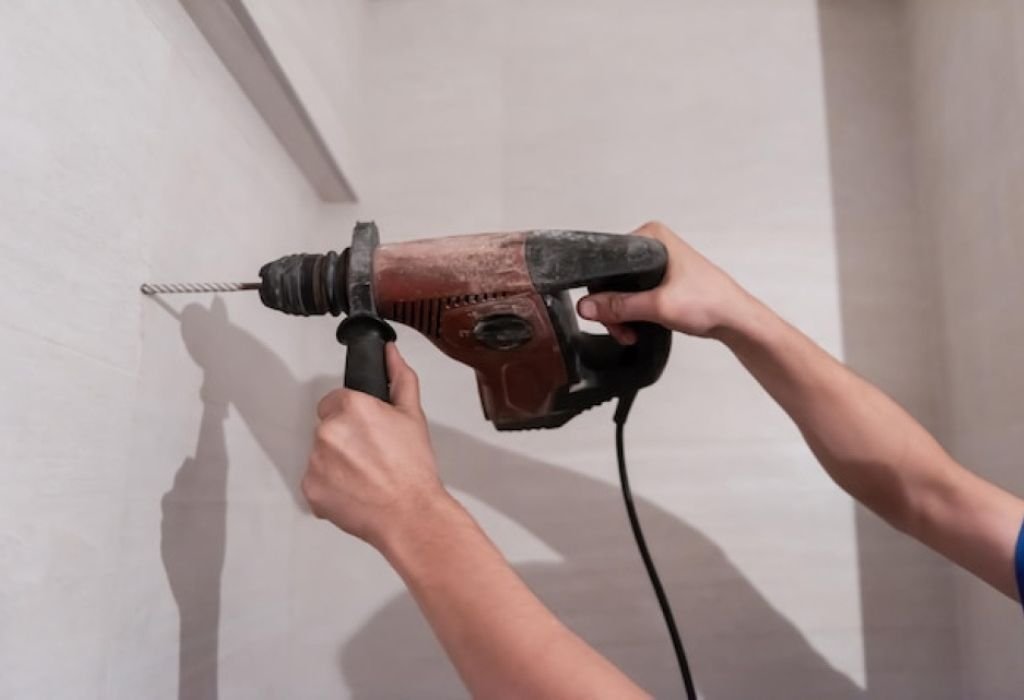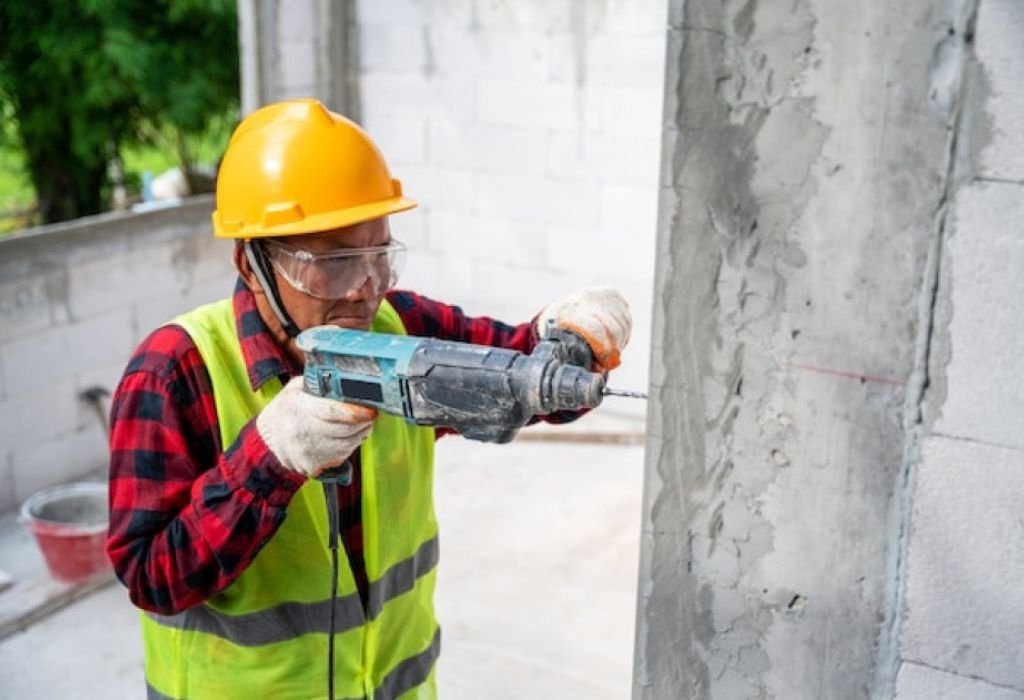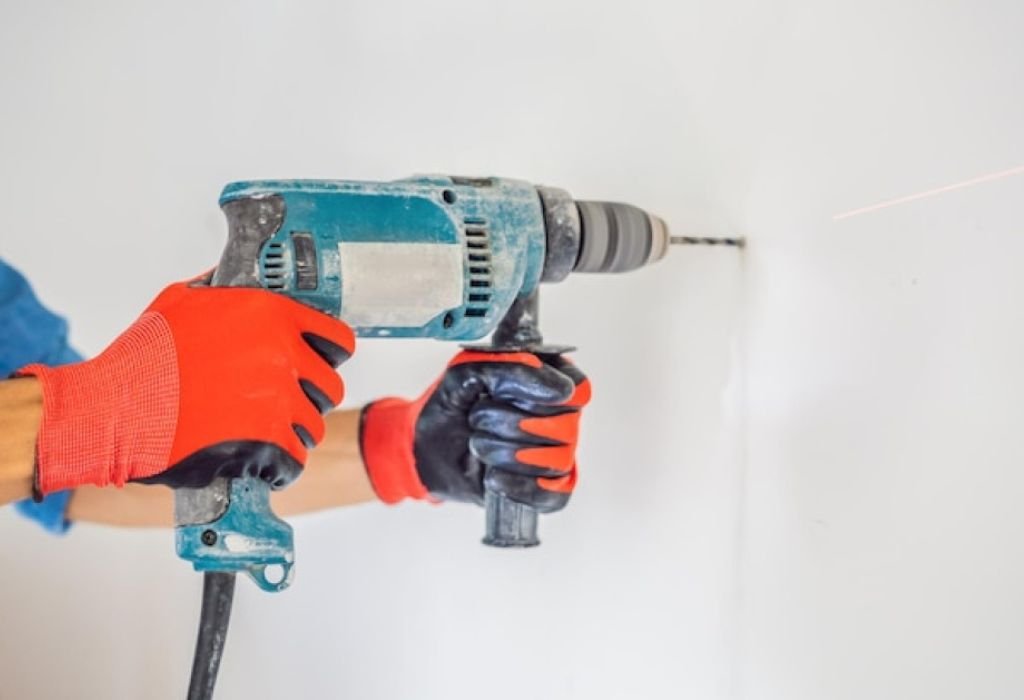A homeowner attempts to mount a heavy shelf on a concrete wall with a small hammer drill. The bit overheats, the hole stalls, and the project ends in frustration.
The mistake was not the effort, but using the wrong size tool for the job.
The question many face is simple: what size rotary hammer do I need for my project.
The answer depends on the material, bit diameter, and frequency of use.
Rotary hammers come in multiple sizes, typically grouped as SDS-Plus, SDS-Max, or spline drive.
Each size determines the maximum hole diameter, overall power, and the type of tasks it can perform. Choosing correctly saves time, reduces fatigue, and ensures safer work.
According to a global tool market report, demand for rotary hammers is expected to grow at a 5.3% CAGR through 2030, driven by both DIY and professional construction projects source
. Yet many buyers still select oversized or undersized tools, leading to wasted money and unnecessary strain.
Tool studies also show that improper drill or hammer selection can increase project failure rates by over 30% in masonry and concrete applications source.
This makes understanding hammer sizes not just a matter of convenience, but also safety and efficiency.
This guide breaks down small, medium, and large rotary hammers, with examples of where each size works best. By the end, the confusion around what size rotary hammer you need will turn into a clear and confident choice.
Understanding Rotary Hammer Basics

A rotary hammer is designed to drill and break through tough materials like concrete, stone, and masonry. Unlike a hammer drill, it uses a piston-driven hammering action that produces higher impact energy.
This hammering system allows rotary hammers to work faster and with less user effort compared to standard drills. Choosing the right size determines whether the tool will perform efficiently or cause unnecessary strain.
Most rotary hammers are categorized by their chuck system: SDS-Plus, SDS-Max, or spline drive. These systems dictate the maximum bit size, torque, and type of applications the tool can handle.
What makes a rotary hammer different from a drill?
It combines rotation with a piston-driven hammering mechanism that delivers stronger impact force.
Why does size matter in a rotary hammer?
Size determines power, bit compatibility, and how long you can use the tool without fatigue.
Is bigger always better?
No, oversized hammers are heavy and tiring for light-duty tasks.
What attachments are commonly used?
SDS-Plus and SDS-Max bits, chisels, and core bits for various jobs.
Does motor type affect size efficiency?
Yes, brushless motors allow smaller tools to deliver higher output while improving durability.
Rotary Hammer Size Categories Explained
Rotary hammers are grouped into three main categories: small, medium, and large. Each size fits specific projects and bit diameters.
Small rotary hammers (under 1 inch capacity) are ideal for drilling anchors, tile removal, and light masonry work.
Medium rotary hammers (1 to 1.5 inch) handle general-purpose jobs like doweling, rebar drilling, and thicker concrete.
Large rotary hammers (1.75–2 inches or more) are built for demolition, coring, and heavy commercial work.
What is SDS-Plus size range?
SDS-Plus fits small to medium hammers, typically up to 1.25 inch diameter holes.
What is SDS-Max designed for?
It handles large holes, chiseling, and demolition work.
Can one hammer fit all jobs?
No, each size category is specialized for different applications.
Do small hammers handle rebar?
They can with proper bits, but not as efficiently as medium or large hammers.
Does weight increase with size?
Yes, larger rotary hammers often weigh 15–20 pounds or more.
Factors to Consider Before Choosing a Size
The right rotary hammer size depends on your specific needs and work environment.
Project type: Home renovation, construction, or demolition.
Material: Brick, tile, concrete, or reinforced concrete.
Frequency: Occasional DIY use versus daily professional jobs.
User strength: Larger tools require more control and stamina.
What materials are you drilling?
Concrete and stone need larger hammers, while brick or tile need smaller ones.
How often will you use it?
DIYers may only need a compact SDS-Plus, while contractors benefit from SDS-Max.
Does bit diameter dictate size?
Yes, larger bits require bigger hammer systems.
How does tool weight affect choice?
Heavy tools increase fatigue but provide more drilling power.
Does power source matter?
Yes, corded models are stronger for continuous work, while cordless versions are lighter and portable.
Common Use Cases and Recommended Sizes

Rotary hammers should be matched to the scale of the job.
For light home projects: SDS-Plus compact hammers are sufficient.
For medium construction jobs: SDS-Max hammers with 1–1.5 inch capacity fit best.
For demolition and coring: Heavy SDS-Max or spline hammers are required.
For drilling anchors: Small SDS-Plus hammers provide control.
For concrete slabs: Medium SDS-Max hammers balance power and handling.
Can one tool do both light and heavy tasks?
Not effectively, as size mismatch causes inefficiency.
Are large hammers needed in home use?
No, unless working on foundation or demolition projects.
Is renting practical for rare heavy jobs?
Yes, it prevents overspending on tools you rarely use.
Rotary Hammer vs Hammer Drill: Where Size Matters
Many people confuse hammer drills with rotary hammers, but they serve different purposes.
Hammer drills are smaller, lighter, and better for brick or light block. Rotary hammers excel at drilling into reinforced concrete and demolition.
Can a hammer drill replace a rotary hammer?
No, hammer drills lack the impact energy of rotary hammers.
When is a hammer drill enough?
For small holes in brick or drywall anchors.
When is a rotary hammer required?
For large holes in concrete, stone, or rebar-heavy projects.
Do hammer drills use SDS bits?
No, they typically use standard chucks.
Why do pros choose rotary hammers?
Because they deliver faster, safer, and more durable results.
Matching Rotary Hammer Size to Bit Size
Bit diameter is the clearest way to determine hammer size.
For 1/2 inch bits: A small SDS-Plus hammer is enough.
For 1 inch bits: Medium SDS-Plus or entry-level SDS-Max models are suitable.
For 2 inch core bits: Heavy SDS-Max hammers are required.
Do bit sizes limit hammer choice?
Yes, exceeding limits risks tool damage and unsafe operation.
Does shank type matter?
Yes, SDS-Plus and SDS-Max are not interchangeable.
Can adapters solve compatibility?
They exist but reduce performance and durability.
Do large core bits require special hammers?
Yes, only heavy-duty rotary hammers are designed for them.
Ergonomics and Safety in Size Selection
Choosing the right size also impacts comfort and safety.
Does size affect fatigue?
Yes, larger tools increase user strain.
What safety gear is needed?
Gloves, goggles, and ear protection.
Does vibration matter?
Yes, anti-vibration features improve safety and comfort.
Can tools be too powerful for the user?
Yes, oversizing risks loss of control.
Are lightweight hammers safer for beginners?
Yes, smaller models are easier to handle and control.
Budget and Value Considerations

Rotary hammers vary widely in price depending on size and brand.
Small SDS-Plus hammers: $150–$300 average.
Medium SDS-Max hammers: $300–$700 average.
Large SDS-Max hammers: $800–$1,500 or more.
Are cordless models more expensive?
Yes, especially with batteries included.
Is renting an option?
Yes, it’s ideal for occasional heavy-duty jobs.
Do warranties matter?
Yes, they protect against costly repairs.
Is brand reputation important?
Yes, top brands like Bosch, Hilti, and Makita ensure durability.
Expert Tips for Choosing the Right Size
A checklist can simplify the decision-making process.
Should I buy based on my biggest project?
Yes, always size for the largest task you’ll handle regularly.
Do pros own multiple hammers?
Yes, many keep both small and large models for flexibility.
Is cordless powerful enough now?
Yes, for medium jobs, though corded remains better for heavy work.
Does weight matter long-term?
Yes, choose a size you can handle comfortably for extended use.
What’s the best starting point for beginners?
A small SDS-Plus for basic masonry and concrete drilling.
Conclusion
The answer to what size rotary hammer do I need depends on the scale of your projects, the materials you’re working with, and your own handling capacity. Small SDS-Plus models fit light DIY tasks, medium SDS-Max hammers balance strength and control for general construction, and large hammers dominate heavy demolition.
Selecting the right size saves money, prevents fatigue, and ensures safe, efficient results. Whether you’re a homeowner hanging shelves or a contractor breaking through concrete, the right rotary hammer size makes every job faster and easier.

I’m John F. Nicholas, the founder, lead writer, and drill enthusiast behind 101drill.com. With years of hands-on experience in power tools and DIY projects, I created this platform to share practical knowledge, expert tips, and real-world insights to help others master the art of drilling.
